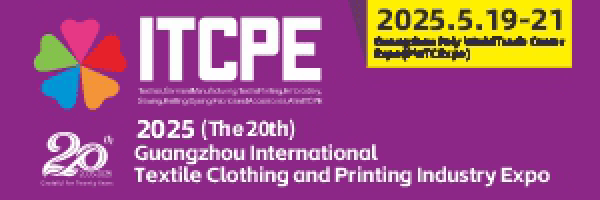By: Jim Vallette
Eliminating Toxics in Carpets: Lessons for the Future of Recycling – a new report by the Healthy Building Network (HBN) – calls for eliminating over 40 highly toxic chemicals in carpets that threaten public health and impede recycling. These toxins are known to cause respiratory disease, heart attacks, strokes, asthma, and immune and developmental health problems in children. The report outlines strategies to protect public health and the environment by eliminating these hazardous chemicals from carpets, increasing carpet recycling rates, and improving product transparency.
Most flooring sold in the U.S. is carpet. Carpets hold a 60 per cent share of the U.S. flooring market, with 11 billion square feet sold per year. Of that, only five per cent is recycled. Billions of pounds of carpets are annually dumped in American landfills or burned in incinerators – releasing deadly pollutants into the air, soil and water. Carpet production is projected to grow 4.5 per cent annually in the U.S. to 14.6 billion square feet by 2019, so carpet production, use and disposal will continue to have major repercussions for our health and environment.
The release of this groundbreaking report complements a landmark California bill (AB 1158, Chu) signed on Saturday by Governor Jerry Brown that will force major changes in how carpet is made and waste handled, mandating a doubling of the state’s current carpet recycling rate by 2020 and ending the consumer subsidization of carpet incineration. “We applaud California for distinguishing itself as the only state in the country to address the growing waste problem linked with the disposal of carpets,” said Gina Ciganik, CEO of the Healthy Building Network. “While an important first step, much more needs to be done to protect human health and the environment. We also need to eliminate the most dangerous toxins from further use and demand the design of safe, environmentally friendly, sustainable carpets.”
“Protecting public health while achieving desired recycling rates, particularly those just mandated in California, will require a combination of strategies, including product transparency, recycled feedstock screening, and less toxic carpet design,” noted Jim Vallette, Healthy Building Network Research Director and the report’s lead author. “Fully realized, this is a formula that works: it boosts recycling rates by creating clean material streams, protects human health and the environment, and saves energy and other resources.”
Eliminating toxins is not only necessary for manufacturers to meet their new recycling rates, it will also have major benefits for human health, especially for children. “Developing fetuses, infants, and children, are especially vulnerable and exposure to even small amounts of these toxic substances can lead to disease early in life, later in life, or even across generations,” said Judy Levin of the Center for Environmental Health.
“The youngest, who spend much of their time at ground level, will benefit the most from efforts to remove toxic substances from the carpet.” By pursuing efforts to harvest the valuable materials from the carpet at end of life and use them to create new carpet, some local governments are providing a model for others to follow.
carpet without toxic substances will increase the value of carpet feedstock in the long-term, ideally for recycling into
new carpet,” notes Jen Jackson of the San Francisco Department of the Environment, “That’s the only way to achieve a truly circular economy of carpet, and something we’re currently seeking to implement in San Francisco’s carpet procurement policy.”
The report also found that manufacturers consistently failed to fully disclose carpet ingredients, and that green certification does not address some of the key substances of concern. These gaps frustrate consumers’ right to know if the carpet they’re purchasing poses a threat to their health, and the health of their family. The vast majority of carpets on the market today are in some way certified “green” or otherwise publicly rewarded, even though most of these carpets contain toxic substances that the manufacturers have not disclosed to the consumer. Report authors call upon regulators to mandate the full disclosure of carpet ingredients as well as their risks to human health.
Alternatives to every toxic substance identified in the report are available today, the authors determined. This finding indicates a slow and steady, albeit piecemeal, transformation of the carpet industry is underway. The largest carpet company in the U.S. informed HBN that it “no longer uses ash as a raw material in any of its carpet products.” Three major producers sell carpet fibres without fluorinated stain repellants. Others have implemented recycled content screening practices or launched new carpet lines that are seemingly well designed for circular recyclability. It is time, the report concludes, to scale up such solutions.
Importantly, safer design alternatives for most toxic substances already exist and go hand-in-hand with increasing the potential recyclability of materials. “We have seen the value of recovered materials improve when manufacturers use simpler and less toxic materials in design,” said Wes Sullens of the U.S. Green Building Council. “When manufacturers limit or remove toxic additives from product formulation — a dully discloses and track those ingredients from production through use and recycling — the overall value of materials are increased. In this day and age, a product with contents that are known, preferred, and desired by recyclers will inherently have more value and lead to greater recovery and realization than those that are unknown.” The report concludes with a call for the fundamental transformation of the carpet industry.
Recommendations include:
• Banning the most toxic substances identified in this report and replacing them with other readily-available, less toxic chemicals;
• Incentivizing the design of fully recyclable carpets and removing substances that impede that process;
• Ensuring that toxic substances in carpet waste are identified and removed before they are recycled into new consumer products including carpet;
• Increasing and enforcing protections for workers in the recycling industry;
• And, requiring that manufacturers and retailers fully and publicly disclose all material contents in new carpet.




















